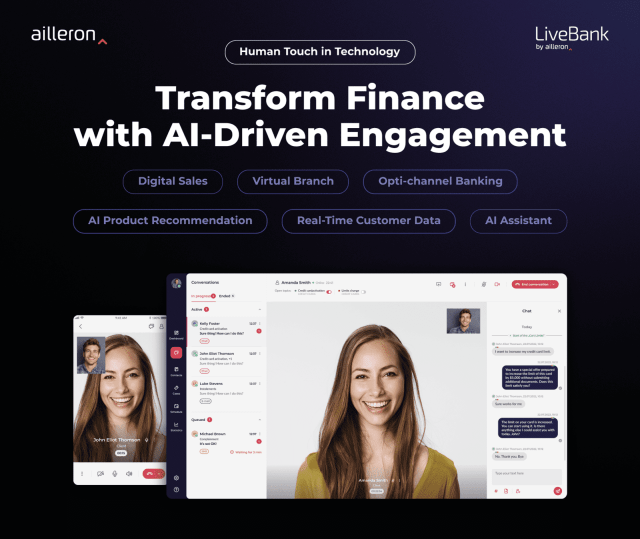
This is a sponsored article by Glassbox.
Fintech leaders, C-suite executives, and investors are facing an epic challenge: How do we adapt our customer acquisition strategies as the landscape becomes more competitive? In this article, we’ll highlight the challenges fintech companies face in customer acquisitions and the benefits of digital experience intelligence (DXI) in understanding your customer behaviors and challenges. Armed with those insights, you’ll be better able to navigate the ever-evolving fintech environment to grow your customer base and nurture your existing customers.
Want to know which of your marketing assets was most viewed by new conversions? Done!
Wondering where the common dropoff points are in your mobile app? No sweat.
Here are ten ways DXI can inform and refine customer acquisition strategies for fintech companies to acquire more of their ideal customers.
1. Identifying Acquisition Opportunities
Digital experience intelligence enables your organization to measure and analyze how users interact with your website or mobile app. Analyzing these journeys provides insight into pain points and areas of high engagement for potential customers. This initial informational process can help you tailor your product offerings and marketing outreach to engage your ideal customers.
Note: Be sure you’re targeting your ideal customers – the ones who truly need and will benefit from your products or services. Understanding who they are, and making that extra effort, will pay off with a client base that is bought in and wants your solutions to work for them.
2. Data-Driven Optimization
Leveraging insights from digital experience intelligence can help identify which marketing channels attract your target audience. In addition, user behavior analysis can measure the effectiveness of ad campaigns to optimize them across different channels.
👉🏻 For tips on gaining and retaining digital banking customers, check out this guide: 5 Mobile App Optimization Best Practices for Banks.
3. Personalization at Scale
Personalizing customer experiences is one of the most effective ways to increase engagement and conversion rates, especially during the consideration and decision-making stages. A digital experience intelligence platform like Glassbox is the easiest and most effective way to gain critical insights into how users interact with your platform.
You can then use that data to segment customers by a variety of metrics to provide more relevant, personalized digital experiences. The data gained can also be used to inform product recommendations, web content, and marketing messages, as well as cater to specific preferences, all of which can boost engagement and conversions.
4. Mobile Optimization
Nearly 40% of app uninstallations occur because people are simply not using the app. The best way to understand why customers are abandoning your app is by measuring and monitoring your customer journeys. Armed with that information, you can refine your app to ensure it’s relevant, intuitive, and user-friendly so your users are never tempted to select “Remove app.”
5. A/B Testing for Optimization
Data-driven insights are the holy grail of refining customer acquisition strategies. A/B testing enables companies to understand which versions of websites, apps, and offers perform best in attracting and converting potential customers. The insights you gain can inform continuous improvement of user experience and refine your customer acquisition strategies.
6. Proactively Addressing Customer Pain Points
Technology like Real User Monitoring (RUM) and newer iterations like Real User Experience (RUX) enable fintech companies to quickly detect and resolve technical issues.
The ability to swiftly address user experience pain points and intercept technical snags before they escalate can transform your customer’s journey from one of frustration into a smooth and responsive experience that makes them feel valued. With 80% of consumers reporting that customer experiences need to be improved, proactive engagement is your golden ticket to differentiation.
7. Unlocking More Substantial Customer Feedback with AI
Voice of the Customer (VoC) data captures customer feedback so you can gain a deeper understanding of their digital experiences. However, VoC data only represents the vocal minority—our internal analysis found that only about 4% of users provide feedback.
Fintech companies can now leverage AI to automatically compare these rated interactions to similar interactions across the entire user base. We do this at Glassbox with our Voice of the Silent (VoS) tool, which makes it easier to understand what the majority is experiencing, even when they blow off satisfaction surveys.
8. Building Customer Trust Through Transparency
Building customer trust is the most direct path to loyalty. Digital experience intelligence reveals where users hesitate to provide information or engage, which can reveal areas for improving transparency about data privacy and security measures. Addressing those concerns demonstrates your commitment to user safety, which puts you further along the path to customer trust and loyalty.
9. Clear The Biggest Hurdle: Knowing What Your Customers Want
With fintech products and services flooding the market, customers have an exhausting supply of options if you fall short of their expectations for seamless digital experiences. Understanding how they experience interactions with your website or mobile app is critical to effectively measuring, analyzing, improving, and ultimately ensuring customers feel understood and appreciated.
10. Make Customer Acquisition Everyone’s Business
Customer acquisition should be an all-encompassing, organization-wide effort – not just the job of marketing or product development. Lasting relationships are supported at multiple levels and in diverse ways, and playing that message on repeat is essential to making it stick.
Want to see what DXI actually looks like in action? Click around in Glassbox’s self-guided platform tour.




























